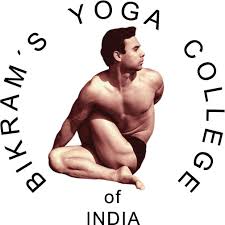Recently, I read Ryunosuke Koike’s The Practice of Not Thinking, and it struck me how closely its principles align with the practice of Bikram yoga. Koike’s teachings on mindfulness, letting go, and mental clarity mirror what we experience in the hot room. While the book focuses on cultivating a peaceful mind, Bikram yoga offers a physical and mental space to put these lessons into practice.
Here’s how the two connect:
1. Stillness in Motion
Koike highlights the importance of stillness for mental clarity. Similarly, Bikram yoga provides a structured environment where practitioners move through 26 postures and 2 breathing exercises in a heated room. Despite the physical intensity, the practice demands a calm, focused mind. Holding postures while observing your breath mirrors Koike’s idea of finding stillness amidst chaos.
2. Letting Go of Overthinking
Overthinking can paralyze us, and Koike advocates for releasing the need to analyze every thought. In Bikram yoga, there’s no time for overthinking—each pose requires complete attention. This practice trains the mind to stay present, reducing mental chatter and fostering a sense of relaxation.
3. Mindfulness in Action
Koike encourages mindfulness in daily activities, and Bikram yoga is a perfect example of this in action. Every posture invites you to be fully present, aware of your body, breath, and mind. This mindfulness carries over into daily life, helping you approach tasks with greater focus and appreciation.
4. Embracing Impermanence
Koike teaches that thoughts and feelings are transient. In Bikram yoga, you experience this firsthand. The discomfort of a pose, the heat, or a wandering mind—it all passes. Learning to accept these moments without resistance cultivates resilience and emotional freedom.
5. The Power of Breath
Both Koike and Bikram yoga emphasize the breath as a tool for grounding. Pranayama (breathing exercises) at the beginning and end of a Bikram class anchors your mind and body. When challenges arise—on or off the mat—returning to your breath provides clarity and calm.
6. Observing Without Judgment
Koike’s advice to observe thoughts without judgment aligns beautifully with Bikram yoga’s ethos. Each class is an opportunity to observe your body’s capabilities and limitations without criticism. This non-judgmental awareness fosters self-compassion and growth.
7. A Beginner’s Mind
Koike’s concept of a “beginner’s mind” is echoed in Bikram yoga. No matter how many classes you’ve attended, every session is a chance to approach the practice with curiosity and openness. This mindset allows you to discover new depths in familiar postures and keeps the practice fresh and inspiring.
A New Perspective on Bikram Yoga
Bikram yoga is often seen as a physical workout, but it’s much more than that—it’s a moving meditation. Ryunosuke Koike’s lessons remind us that the practice is also a pathway to mental clarity, mindfulness, and emotional resilience.
Whether you’re standing in stillness or flowing through postures, Bikram yoga teaches you to be present, let go of overthinking, and embrace the impermanence of each moment. These lessons, combined with Koike’s insights, offer a holistic approach to living with intention and ease.
So, the next time you step into the hot room, remember: it’s not just about the poses. It’s about the practice of not thinking, of being fully present, and of finding peace within yourself.
Let’s embrace the heat, the breath, and the stillness—and discover the mindfulness that lies within.



